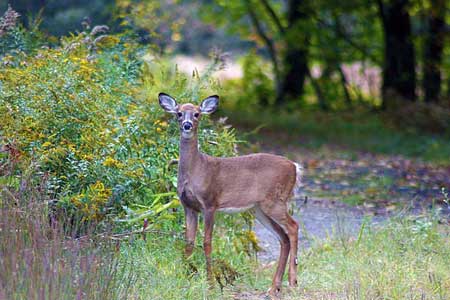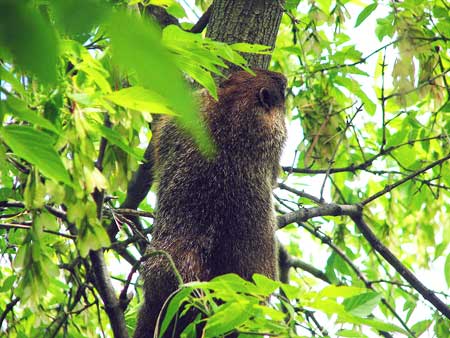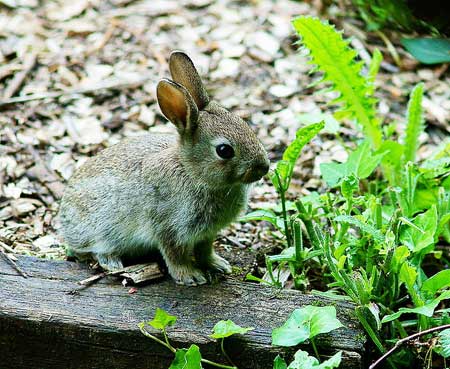Preserve landscapes and gardens by discouraging deer, woodchucks and rabbits
Prevent landscape pests like deer, woodchucks and rabbits from damaging your landscape or garden with these tips.
Nothing is more infuriating than stepping outside to view the swaths of blooming tulips, just to find all of them have been beheaded. The first thought is, “Who?” The next thought is usually dealing with some type of violence against the perpetrator.
Michigan State University Extension horticulture educators and hotlines receive many calls each year about these kinds of problems. There are several hairy mammals that are noted for their interest and enjoyment in our landscaping. Our landscapes are even more enjoyable when there is a drought and these plants are being watered to make them crisp and delicious. In almost all cases, deer, woodchucks and rabbits will be interested in the same kinds of plants and often physical barriers that work for one will work for all.
It’s important to mention a few things about the critters we want to repel. Just call it “knowing your enemy.”
Deer can jump quite high. That’s why most sources indicate a fence height of 10 to 12 feet. This is impractical for most gardeners, but there are alternatives. Deer can also run in a blind panic when frightened and crash into fences or posts. This could happen if using electric fencing. If plants are surrounded by a cylinder of fencing, a deer can reach down the cylinder and bite the tops off whatever part of the plant is available. Deer can stand on their hind feet to reach up to snip and clip twigs. Most people think they can just access a 4-foot height, but they might reach as high as 6 feet.

Deer. Photo credit: Greg Thompson, U.S. Fish and Wildlife Service, Wikimedia Commons
Woodchucks or groundhogs can climb as well as dig. Young groundhogs can climb into small, ornamental trees and graze off the foliage at the top. Older woodchucks can be found in orchards eating fruit off the trees, especially apples. Holes for woodchuck dens are usually close to or in a building or in a protected area, like under a deck. There are numerous exit holes scattered around, too. The predator smell of a dog, regardless of the size, may keep deer, woodchucks and rabbits at bay or lessen damage.

Woodchuck. Photo credit: D. Gordon E. Robertson, Wikimedia Commons
Deer bite off shoots or snap off flower heads. Woodchucks work like a furry mowing machine, grazing down the line of beans or salad greens. Rabbits can be browsers, removing bites and bites as they forage around.

Rabbit. Photo credit: Peter Trimming, Wikimedia Commons
Choices during the summer involve the consistent use of repellents. Smart gardeners keep trying them until they find what works the best. If it rains or plants are overhead watered, repellents must be replaced by evening. The other choice is fencing in plants or fencing out critters. Both woodchucks and rabbits can dig, so it is important to bury the bottom of the fence. For the best digging protection, bend the bottom of the fence outwards so it is horizontal and bury that portion. Critters like to dig close to a fence and this is discouraging. Be sure the gate to the vegetable garden is also keeping out animals. There should not be gaps or cracks to squeeze around or through.
Fences for deer do not have to be vertical. They might be horizontal. Unroll woven wire fencing over scattered cement blocks. Deer cannot place their feet in the holes to thread themselves through. They do not want to step on it and take a chance of ensnaring their feet. Wire has to be rolled up periodically and the grass mowed so it remains effective. Place the wire far enough from plants to make sure deer cannot lean over the wire. But keep your guard up; they are watching.
Related MSU Extension articles



 Print
Print Email
Email